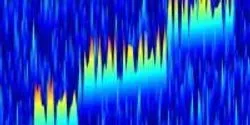Physics

A recent and famous image from deep space marks the first time we’ve seen a forming planetary system, according to a study by University of Toronto astrophysicists

Thermal imaging, microscopy and ultra-trace sensing could take a quantum leap with a technique developed by researchers at the Department of Energy’s Oak Ridge National Laboratory.

For centuries, humans have sought to learn whether life exists beyond Earth. That answer is closer than ever to fulfillment, and an Arizona State University team is working on a key part of that quest with NASA’s backing.

Light can come in many frequencies, only a small fraction of which can be seen by humans. Between the invisible low-frequency radio waves used by cell phones and the high frequencies associated with infrared light lies a fairly wide swath of the electromagnetic spectrum occupied by what are called terahertz, or sometimes submillimeter, waves. Exploitation of these waves could lead to many new applications in fields ranging from medical imaging to astronomy, but terahertz waves have proven tricky to produce and study in the laboratory. Now, Caltech chemists have created a device that generates and detects terahertz waves over a wide spectral range with extreme precision, allowing it to be used as an unparalleled tool for measuring terahertz waves.

Research by scientists at the University of Manchester has revealed that the color of light has a major impact on how our body clock measures the time of day.

Refrigeration and air conditioning may become more efficient and environmentally friendly thanks to the patent-pending work of Louisiana State University (LSU) physicists. The team of researchers led by LSU Physics Professor Shane Stadler has discovered a breakthrough magnetocaloric material that may change the energy industry, including air conditioning and food refrigeration.















